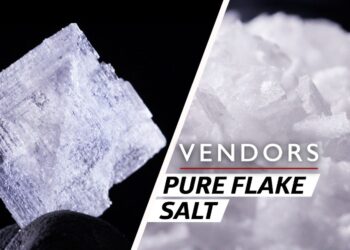By Roger Hancock, CEO of Recall InfoLink
If your company was involved in a food recall, would you know to properly inform key stakeholders about the recall, letting them know what happened, the reason for the recall and what to do? Would you know how to tailor actionable messages for different audiences, using a variety of delivery channels to maximize your reach? And could you navigate this stressful situation while retaining consumer trust and loyalty?
Even companies with the most proactive food safety protocols could suddenly find themselves immersed in a recall situation due to a number of factors, including a contamination issue from a supplier or an honest mistake at their facility. With recalls happening frequently, food businesses must be prepared to expertly manage the situation, and that includes the necessary crisis communications.
In a recall, your company needs to confidently communicate to key stakeholders – including consumers, trading partners, and regulatory agencies – that you’re handling the situation properly. Even during a stressful situation, your company needs to demonstrate professionalism, reassure a nervous public, and work to protect consumer safety – and your brand’s reputation.
Here are best practice tips to follow.
Plan ahead
Food businesses need a thoughtful crisis communication plan that’s prepared and practiced in advance. While the details will vary, have a framework in place before you need it. The plan should include templates for necessary materials (e.g., press releases, social media posts, in-store signage, etc.) Also, create a FAQ document to help keep messaging clear and consistent. Run mock recall simulations so you can identify – and fix – any knowledge and data gaps.
Customize messages for different audiences
Communicate what’s being recalled and why, emphasizing the actions that must be taken. Create customized, action-oriented messages for each different audience. Tell consumers what to do if they bought (and/or consumed) contaminated products. Trading partners will want to know the source of the problem, where the affected products are located, how to dispose of the products, and how your company is rectifying the situation. Internally, keep employees informed about what’s happening. Provide pictures of products with highlights of critical information (e.g., code dates, lot codes, production facilities, etc.).
Collaborate with regulatory agencies
Regulatory agencies oversee recalls and ensure compliance with regulations. Food businesses must comply with their data and communication requirements, providing clear and accurate information to help protect the public. When companies provide complete and well-structured information, it helps the collaboration go more smoothly and makes the recall more successful.
Act fast
During a recall, it’s critical to get accurate information to key stakeholders, but before you communicate anything, know all the facts. While it’s important to get information out quickly, it’s more important to be accurate with the information you disseminate because incomplete, unclear, or inaccurate messages can delay the removal of contaminated items from inventory, store shelves, and/or consumers’ homes.
Leverage technology
Use tech tools to amplify your communication efforts. A huge challenge when trying to meet recall requirements is having correct contact data available – much less having it organized and accessible. For B2B contacts (e.g., corporate office to stores, supplier to warehouses), companies must keep information updated due to high turnover rates, disparate systems for sales and order fulfillment, etc. For B2C contacts (like consumers), communication channels can be hit or miss. Some companies may have online loyalty programs, while others rely on in-store paper sign-ups to collect customer data. A robust CRM platform, loyalty program app, and other tech solutions will make communication easier, more personal, and more effective. You may put significant effort into crafting the right messages, but unless you have effective ways to distribute them to the right people, your efforts will be unsuccessful!
Utilize multiple communication channels
Using multiple communication channels will maximize exposure for your messages. Therefore, leverage a combination of your website, social media platforms, news outlets, in-store signs, app notifications, loyalty programs, emails, customer and partner databases, etc. to reach as many people as possible. Using this multi-channel approach, and being consistent with your messaging across all delivery channels, will increase the likelihood that your messages are received, understood, and acted upon. Consistent messaging also prevents confusion that can cause frustration and inaction.
Show concern
During a recall, key stakeholders may feel anxious, confused, or angry. Many consumers are frustrated that recalls are so frequent. Acknowledge the inconvenience and offer support.
Apply lessons learned
After the recall, review your communications strategies and take key learnings from this experience that could improve the way you manage future communication efforts.
While your company likely follows best practice food safety and quality protocols, one innocent mistake could cause a food safety breach and subsequent recall. Therefore, it’s important to proactively prepare (and practice) for recalls in advance, so your team will be ready for any scenario. If your organization is involved in a recall, stay calm and follow your communications plan. Be honest about what happened, provide clear calls-to-action, and be clear about your commitment to public health and food safety. Proper communication will help your company retain trust and build strong, long-term relationships with key stakeholders.
Roger Hancock, CEO of Recall InfoLink is one of the world’s foremost experts on recalls, with experience that spans the retail, tech, data, regulatory, and supply chain. As the only company focused entirely on recalls, Recall InfoLink makes recalls faster, easier, and more accurate across the supply chain to protect consumers and brands.













